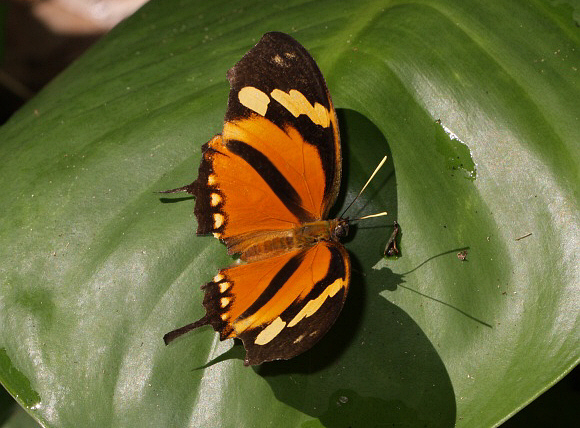 Consul fabius, Satipo, Peru – Adrian Hoskins
Consul fabius, Satipo, Peru – Adrian Hoskins
Introduction
There are 4 species in the genus Consul, of which fabius is the commonest, most widespread and well known. It’s angular forewings, spatulate-tailed hindwings and bright orange and black pattern make it instantly recognisable when basking.
The Tiger-with-Tails is a member of the ‘tiger-complex’, a large group of orange and black species which includes members from the Ithomiinae, Danainae, Heliconiinae, Dismorphiinae, Papilioninae, Pierinae, Charaxinae, Biblidinae, Nymphalinae, Acraeinae and Riodinidae, together with a number of moths from the Arctiidae, Geometridae and Castniidae.
Some of the commoner species are known to be toxic or distasteful to birds, usually as a result of accumulating toxins from the larval foodplants. The Müllerian mimicry theory postulates that these toxic species have evolved a common pattern as a means of defence – a bird which has tasted one or two of them soon learns to avoid eating other similar looking species. Another form of mimicry involves butterflies which are palatable to birds, but which mimic toxic species and thereby trick birds into thinking they are noxious. These edible species are known as Batesian mimics.
Species which are noxious to birds generally have bright aposematic warning colours on both wing surfaces, although the colours on the underside are usually less bright. On the other hand species that are palatable tend to rely on camouflage to protect them when they are at rest. These species typically have underside patterns that simulate dead leaves. In the case of Consul fabius the dead-leaf appearance is enhanced by the marbled pattern and jagged wing shape.
Consul fabius occurs from Mexico to Bolivia.
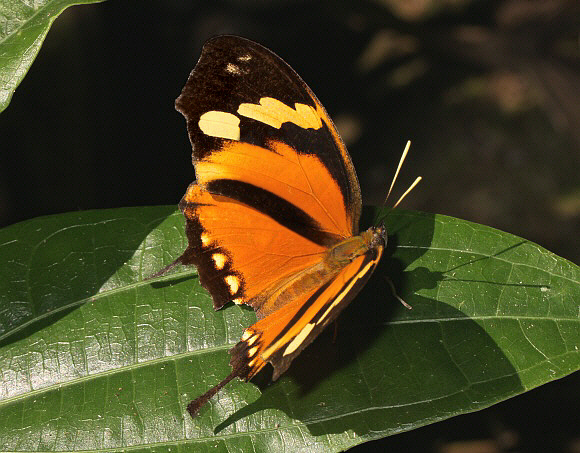 Consul fabius, Satipo, Peru – Adrian Hoskins
Consul fabius, Satipo, Peru – Adrian Hoskins
Habitats
The habitats of this species are diverse, and include deciduous forest, rainforest and cloudforest, at elevations between sea level and about 1800m. It can be found along forest edges and wide sunny forest tracks, and along the banks of rivers and lagoons.
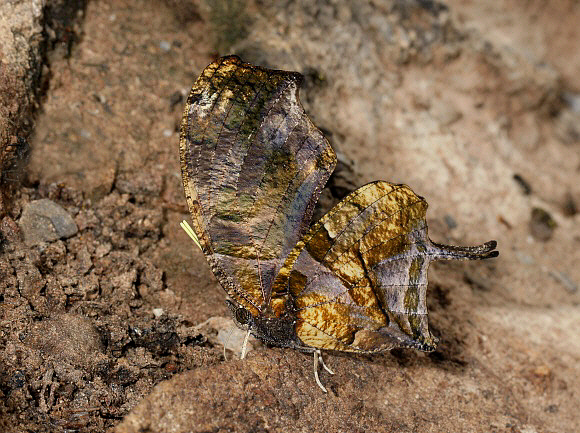 Consul fabius, Satipo, Peru – Adrian Hoskins
Consul fabius, Satipo, Peru – Adrian Hoskins
Lifecycle
The pale green, rounded eggs are laid singly on the leaves of Piper ( Piperaceae ). The larva when fully grown is smooth skinned and dark green, stained with reddish along the back, and with yellow spiracles. It’s head is black with yellow stripes and is adorned with 2 knob-like horns. It spends its life within a rolled up leaf, emerging only for brief spells to feed. The chrysalis is smooth and green, with a black cremaster. The abdominal segments are compacted and strongly tapered.
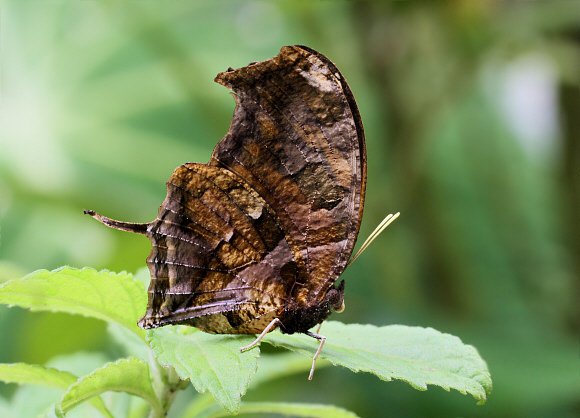 Consul fabius, Tatama NP, Colombia – Adrian Hoskins
Consul fabius, Tatama NP, Colombia – Adrian Hoskins
Adult behaviour
The males spend much of their time in the forest canopy and can most easily be observed from the vantage point of a canopy tower or observation platform. In the mornings they often bask for long periods on foliage, with their wings held half open, at heights between 5-15m above ground level.
Males visit dung and urine from which they sequester minerals that they pass to females in the spermatophore during copulation. Both sexes feed at rotting fruit on the forest floor.
Females descend to the understorey at about noon to oviposit. They can sometimes be seen settled on low foliage with their wings closed. Periodically they circle around, and then flit about among low foliage in light gaps, looking for oviposition sites.
Both sexes have a slow gliding flight, but are capable of flying very rapidly if alarmed.
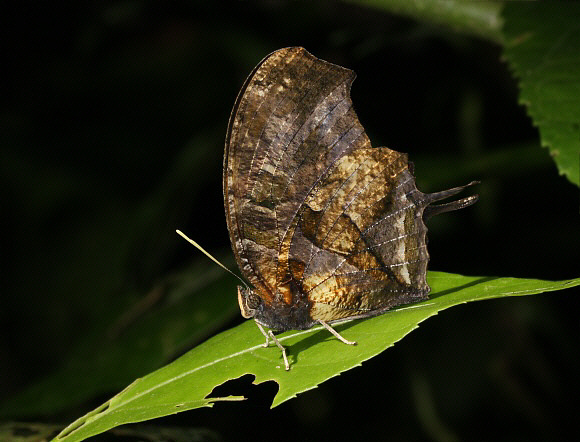
Consul fabius, Satipo, Peru – Adrian Hoskins
